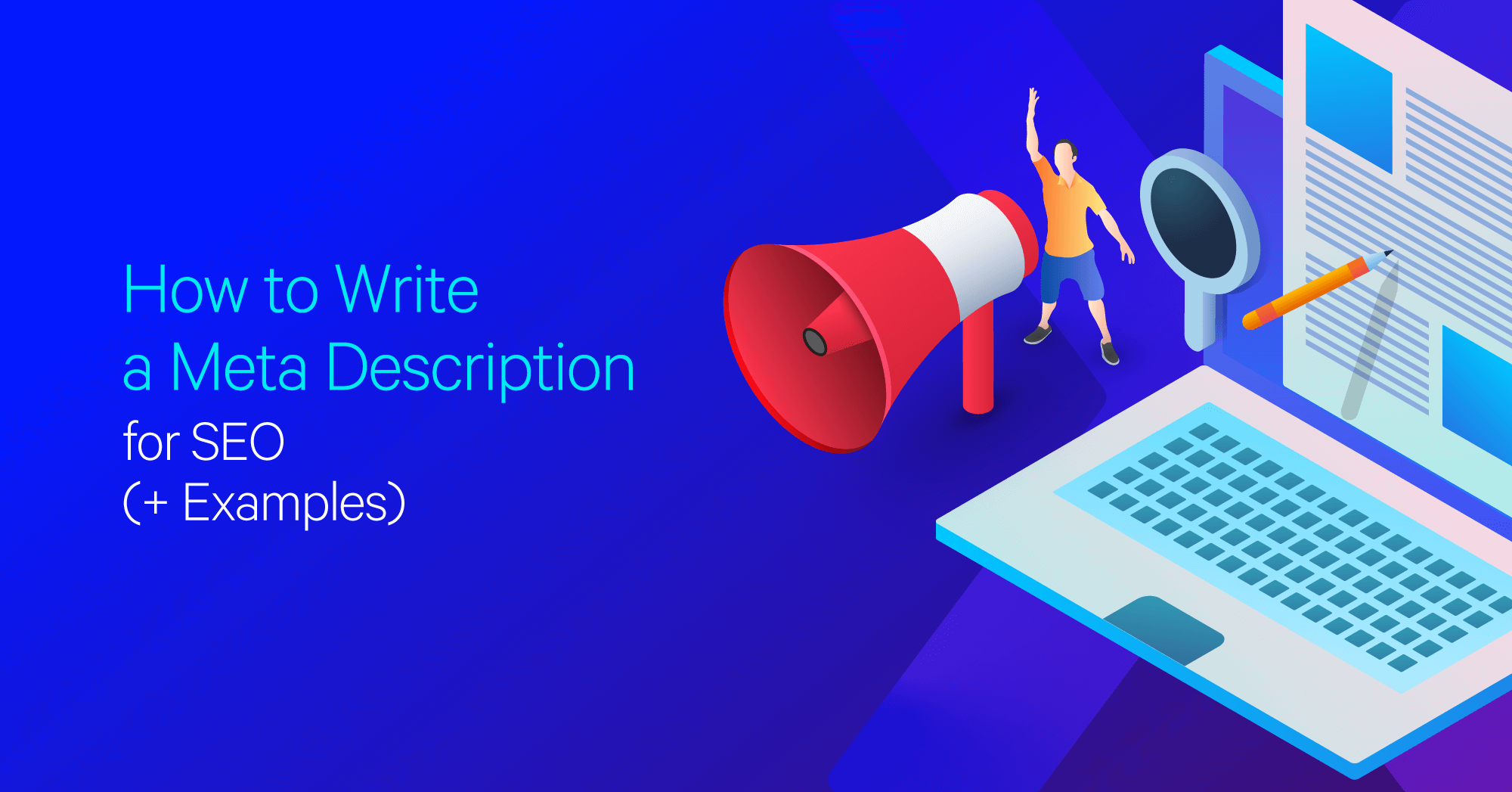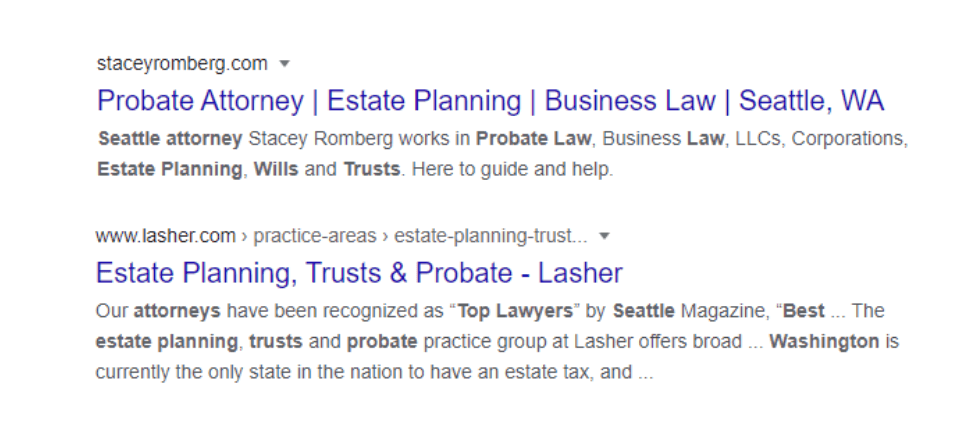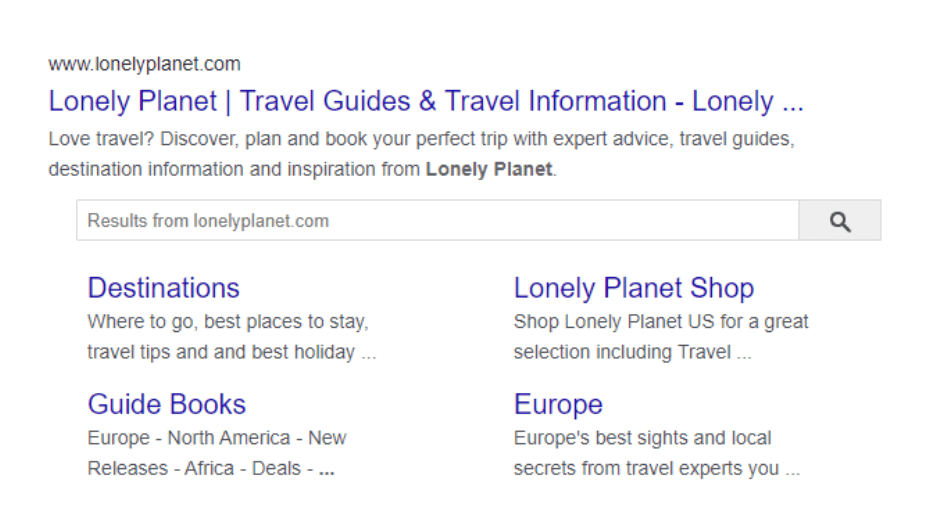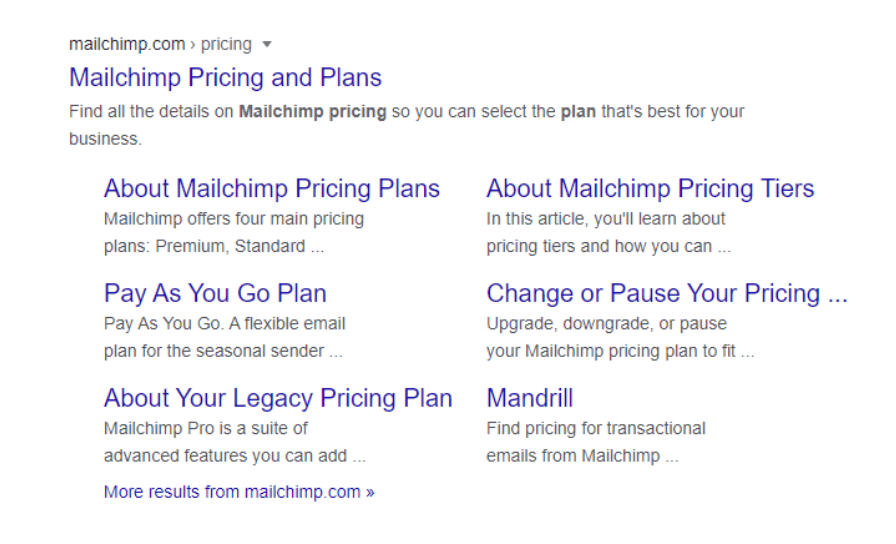How to Write a Meta Description for SEO (+ Examples)

Hand off the toughest tasks in SEO, PPC, and content without compromising quality
Explore ServicesManaging a website’s SEO can be a major task.
There are many different webpage elements that need work, and it’s easy for some more minor tasks to not receive priority.
Meta descriptions are one of those small tasks that often get forgotten.
Although Google has said meta tags are not a ranking factor, they are one of those small on-page SEO tasks you should really optimise.
Here is a quick guide to meta descriptions — what they are, why they’re important, and how to write a meta description to stand out in the search engine results pages (SERPs).
What Are Meta Descriptions?
In short, a meta description is the short section of text that appears below a link in the search results page.
The purpose of a meta description is to describe what the page’s content is about, so people looking through a search results page know what to expect.
Here’s an example:

You can either write them in your CMS yourself whenever you write new website content, or search engines can pull from the content on the page.
There is only so much space that search engines will give to a description. The typical meta description length is between 130 and 160 characters.
It is much better for your SEO to write your own descriptions, so you control what people see before they click on your link. In addition, some social media platforms will also display the meta description with a link that gets shared.
Why are meta descriptions important for SEO?
Even though Google has said that meta descriptions are not a factor they look at for rankings, that statement is misleading. It may be true that how a meta description is optimized does not directly impact any rankings, but they are a very important contributor.
It’s useful to think of meta descriptions as a large part of how your pages and content appear in SERPs and on social media. Google absolutely takes into account how well your pages perform in SERPs, and your meta descriptions will have a big impact on your click rate. Here’s how it will help your SEO:
- Good meta descriptions look better and increase your organic click through rates
- Good click-through rates improve your rankings
- Good meta descriptions can be optimized along with titles and rich snippets to work off each other
Remember that click-through rate is one of the important KPIs for SEO that you should be working on improving. The higher your organic CTR, the higher Google will rank your website.
It goes beyond that too. Meta descriptions are a major help to organically promote your SEO copywriting.
They not only help improve your organic clicks to new content, but they help when promoting links on social media. Some platforms will pull part or all of your meta description when a link is shared, which can also help the click rate as your and others share it.
What about meta keywords?
Meta keywords are an outdated SEO tactic. They look like this:

When Google had a less sophisticated ranking algorithm, this HTML code helped them to understand what a page was about. However, it soon became a spammy tactic and not helpful for searchers, so it was dropped.
In summary: don’t worry about using them. Worry about writing the perfect meta description instead:
7 Tips for Writing Meta Descriptions for SEO
Now it’s time to learn how to write effective descriptions that will help your SEO. These are the meta description best practices you should follow when writing your own.
The guiding principles for these tips all goes back to the idea that meta descriptions should help your CTR. It should also act as part of your whole SERP presentation, along with your meta title tag, URLs and rich snippets.
All these factors should work together to meet the search query as best as possible.
1. Write a meta description for every page
Any page you have on your website should have it’s own meta description.
Do not leave them empty and let Google show one for you. They often get cut off and have poor presentation (and therefore poor user experience), so you won’t get as many clicks as you could otherwise.
In fact, you should make optimizing the meta descriptions of every current and future page part of your SEO checklist. Considering it only requires up to 160 characters, it should be something you can do for a page in seconds.
There’s no excuse to not write one.
2. Keep them unique (avoid duplicate meta descriptions)
When you write meta descriptions for each page, don’t be lazy about it.
Each page should have its own unique description, so you can avoid having duplicates. In fact, Matt Cutts from Google has even said it’s better to leave them blank than to have duplicates.
Why?
Because duplicates are not optimized for each page, which has their own unique content.
You are not mixing up calls to action, relevant keywords, or enticing people to click on that page. This is especially true when someone searches your brand and sees the same description over and over in the results.
3. Keep descriptions between 135 and 160 characters
The ideal meta description tag length is between 135 to 160 characters.
In general, you should make use of the limited space you have to work with to make the page look more enticing to users. But if you go over the 160 character limit, Google will cut it off and not show everything.
It’s better to stay below the limit so users see the exact message you want them to see. When it gets cut off, you might be leaving an important part of the description out. That’s the kind of thing that will cost you some clicks.
Here’s a search for probate lawyers in Seattle. If you were looking to choose a lawyer, which of these two would you click on?

4. Include the page’s target keyword
When people scan through the search results page, they are looking for something that looks like it will address what they’re searching for.
One of the easiest ways to convince them that your page is relevant (and can help them) is by including the main keyword search term in the description.
(If you don’t know that term, do some keyword research to find the important keywords you SHOULD be targeting)
People will find your pages for searches that use its target keyword. If they search for a particular product, service, or piece of information, they won’t click on a page that doesn’t mention it in the SERP.
At the same time, if your page does not include the keyword used for a search in which it appears, Google will make one for you that uses it. If it’s an obscure keyword, that’s one thing. But if the main keyword for the page isn’t in your description, that means Google will ignore it.
5. Avoid using quotation marks
There are two reasons not to use anything but text and basic punctuation (commas, periods) in your descriptions.
First, because meta descriptions are built into the HTML coding of your page, some characters that are used in coding can break the format. The most common problem is double quotation marks (“ or ”), which can lead to problems like this:

The other reason is because you only have 160 characters to work with. There’s no point in using extra punctuation or symbols that limit the number of words you can use to convince users to click on your page.
6. Include value propositions & CTA
Your meta description should accomplish two things.
First, to give a general idea of what the page is about.
Second, it should tell the user what they will get from your landing page:
- Is it a product?
- A service?
- An answer to their question?
Tell them how your page will solve their problems. You can accomplish the second part with a good and short call to action that clearly states what they will get. It could be a free template download, like the example below:

Source: https://blog.alexa.com/wp-content/uploads/2017/08/SEO-Meta-Descriptions-Blurb-Example.png
7. Don’t be shady (aka don’t try to trick your audience)
Getting more clicks is great, and having a high CTR can help your SEO.
However, you should never use shady tactics, like bait and switch, to get more clicks. That’s because CTR is not the only metric you should use to track your SEO performance. Another is bounce rate.
When you mislead people in your meta descriptions to trick people into clicking on a page, what do you think will happen? The second they realize the page is not what you led them to believe, they’re going to leave the page. That’s how you get a high bounce rate.
Not only that, but they’re not going to be happy and may mentally blacklist your website from ever getting their clicks again.
So even if you get a better CTR in the short-term, in the long term you’re going to lose SEO value in the long-term. If search engines catch on to what you’re doing, they may even penalize your entire website. Just don’t do it.
5 Great Meta Description Examples
It’s one thing to see some general tips written out, but sometimes some visual examples can help. If you want to see some real life examples of optimized meta descriptions, you can see our list below.
They are picked from different page types and websites from different industries.
You don’t have to follow them exactly. Just keep in mind the best practices above and see how they are applied in each example.
Think of yourself as a user looking for help in those industries, and ask if the descriptions did enough to convince you to click.
1. Lonely Planet – Home Page

The reason why this meta description is so effective is because it works so well with the other parts of their SERP appearance. It addresses the need people will have: travel information and it stands out in organic search.
It touches on everything they might look for when they search for travel help. It gives a call to action depending on what they’re looking for (plan, book, etc).
2. TK Maxx – Home Page

TK Maxx is a department store company that sells numerous types of products. In their description you see the big product categories, and a quick CTA to shop online.
It touches on the benefit: get big brands at small prices, and delivers on the latter with the online offer of up to 60% off.
3. Prime Women – Article

Prime Women Media is an ecommerce website that offers articles and advice to women over 50 years of age. It covers a multitude of topics, with this article relating to beauty and fashion. In the description it has the primary keyword for the article and clearly outlines the topic being discussed (mature skin issues).
The call to action is for women in that demographic to make their skin look better.
4. MailChimp – Pricing Page

MailChimp is an email marketing solution. When you see this page for their pricing page, you can see the total package they put together with the compelling meta description and snippets.
The description is short and concise, but says everything it needs to. Then the rest of the rich snippets show more information on the same topic.
5. ModCloth – Service Page

ModCloth is an indie women’s fashion retailer. They not only sell clothing and accessories of all types, they also have a service where customers can get help from stylists.
This service page outlines the benefits, and that it is fast and free. The call to action is for people to find a better fit in terms of clothing that matches their style.
Summary
Meta descriptions on their own seem like a small thing. Once you get into the rhythm and understand how they work, and how to write good ones, they are quick and easy to write. Even for a website with hundreds of pages, it should not be a major project to optimize them all.
Despite what you may hear from Google or misinformed SEO specialists, they are important to your SEO. When you follow best practices and write meta descriptions to work with your titles and rich snippets, they work better. Your pages will be highly enticing to click on.
And when more people click on your links from search results, you don’t just get the increased traffic. You also get improved ranking signals sent to Google, so you can get even more traffic in the future.
Hand off the toughest tasks in SEO, PPC, and content without compromising quality
Explore ServicesWritten by Adam Steele on October 6, 2020
COO and Product Director at Loganix. Recovering SEO, now focused on the understanding how Loganix can make the work-lives of SEO and agency folks more enjoyable, and profitable. Writing from beautiful Vancouver, British Columbia.





